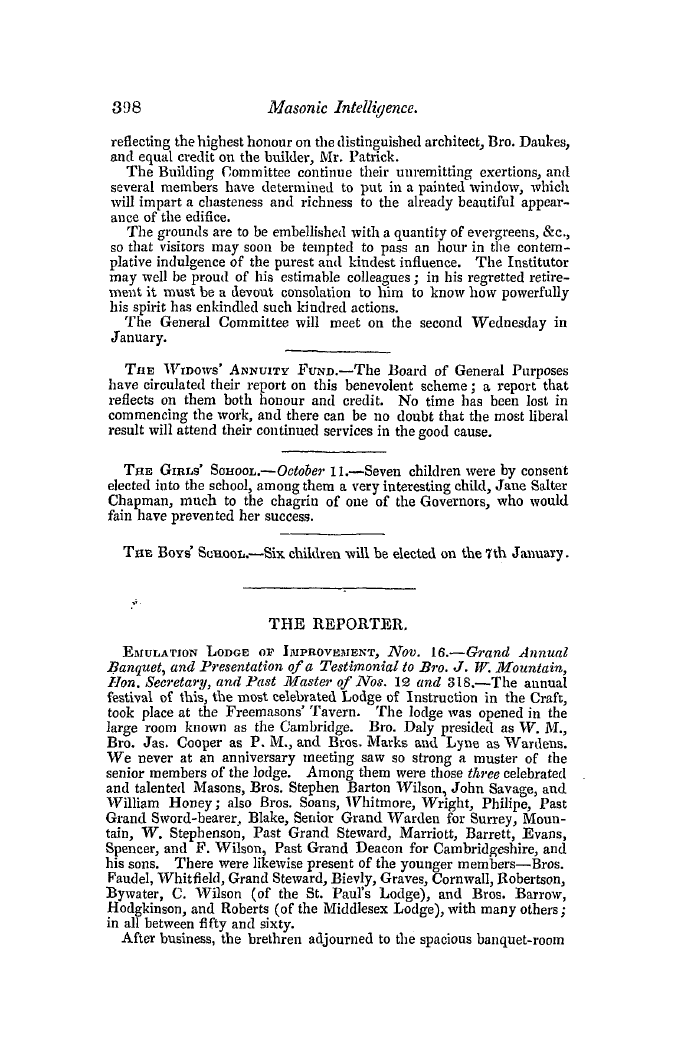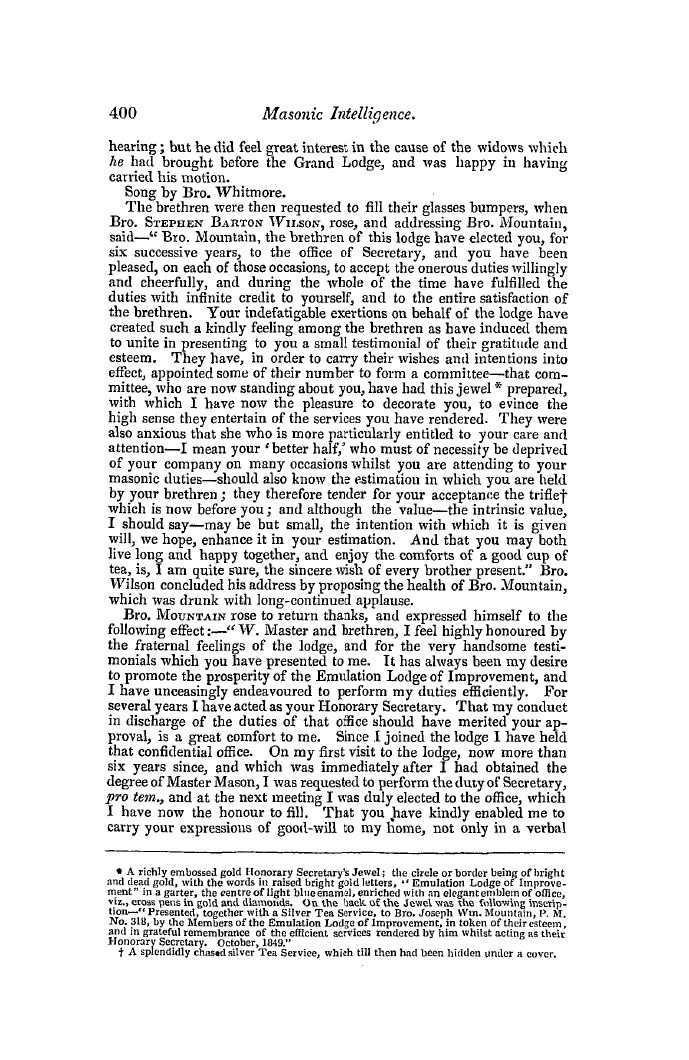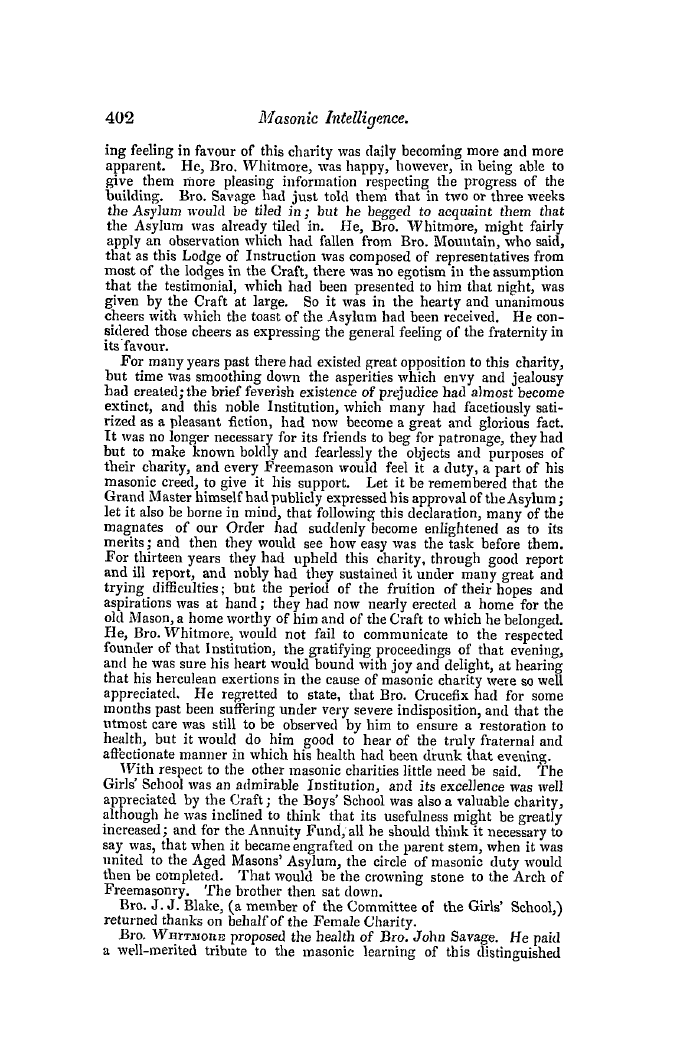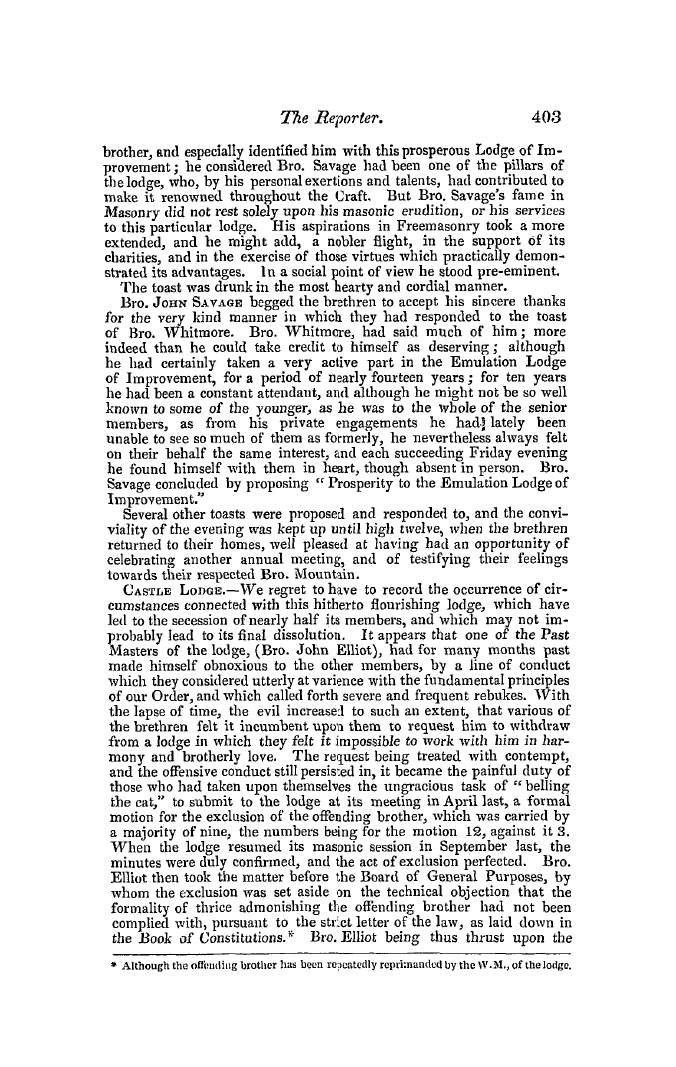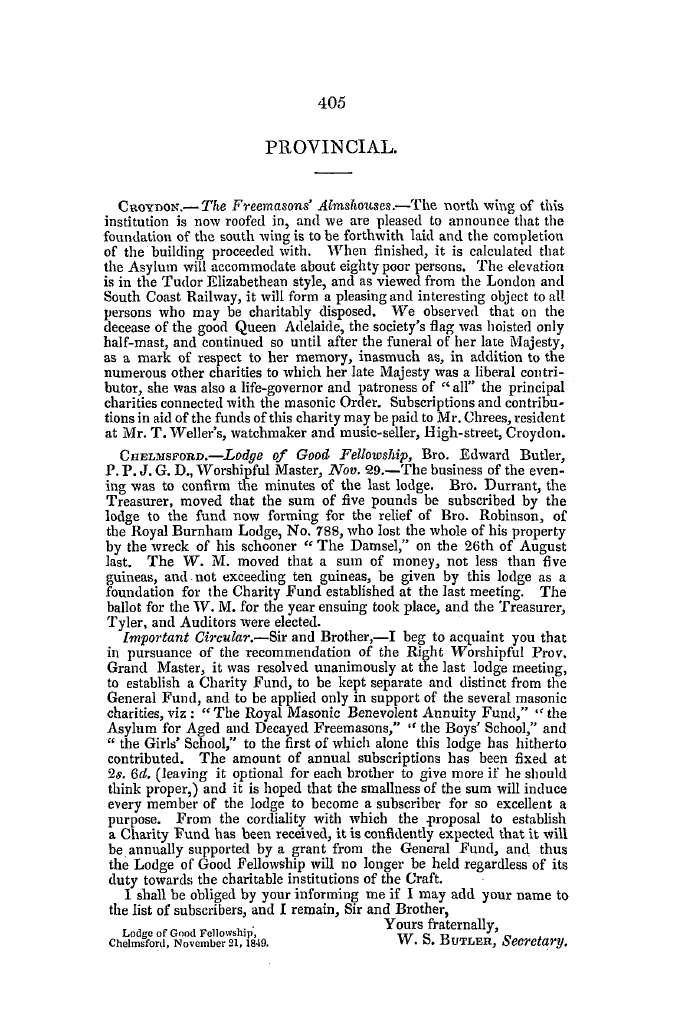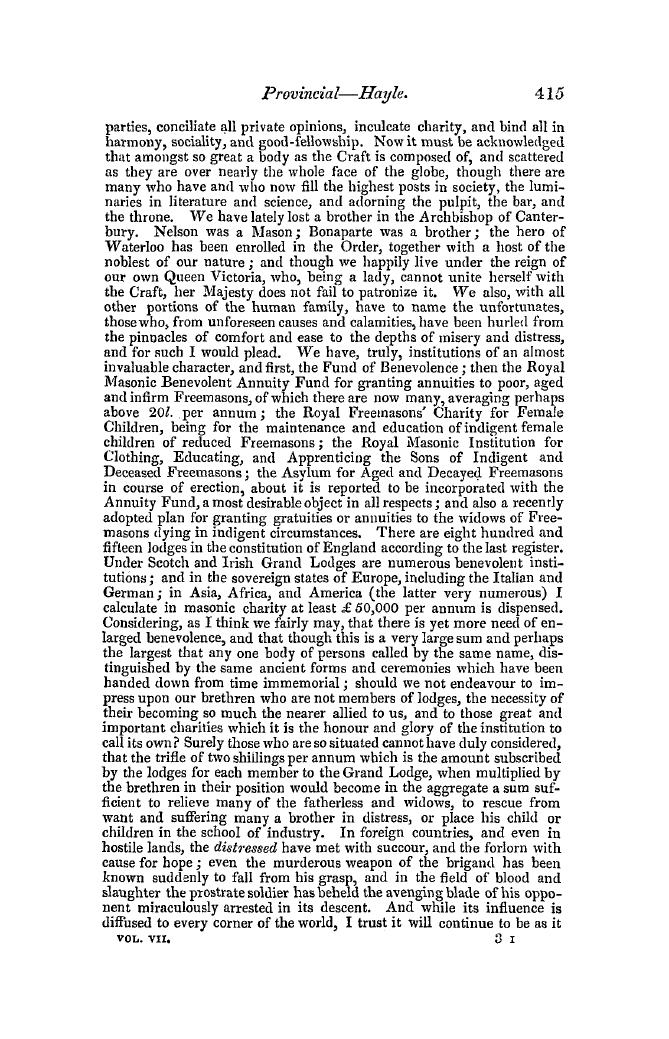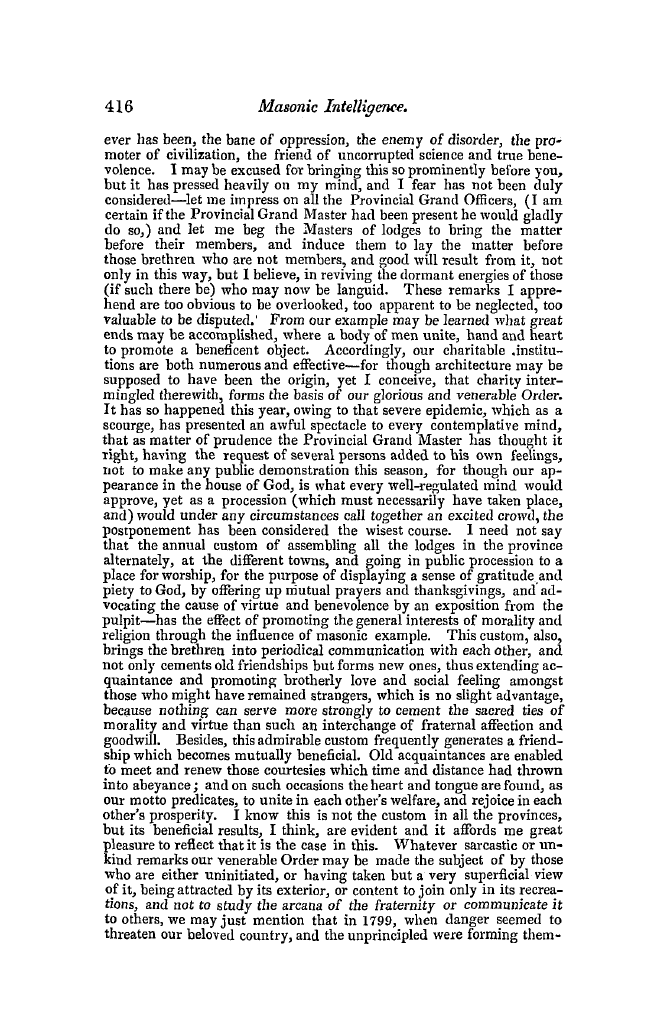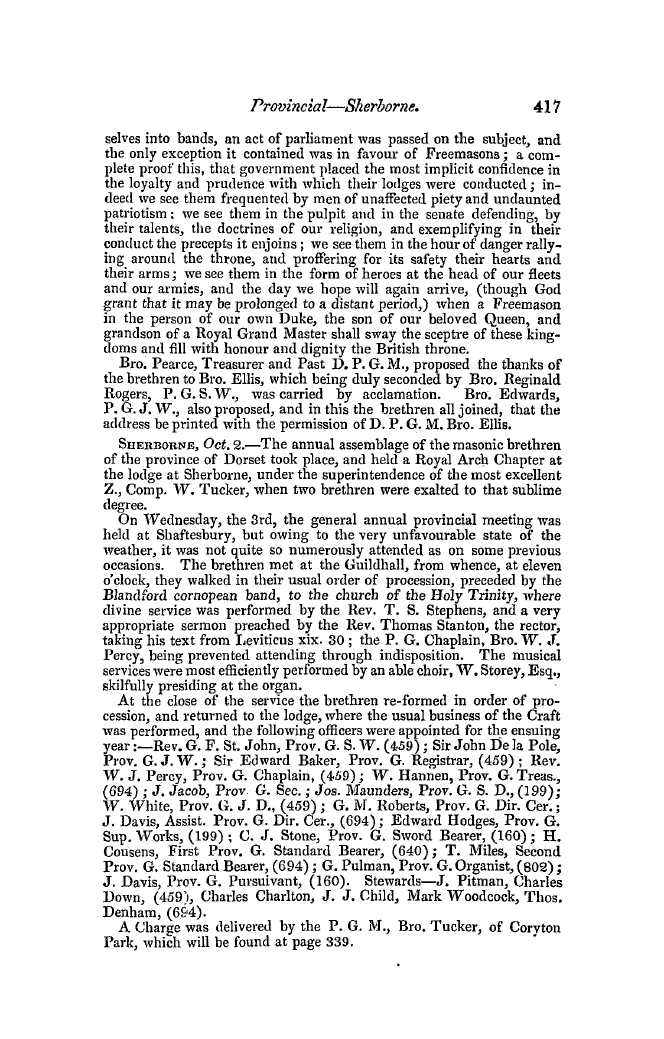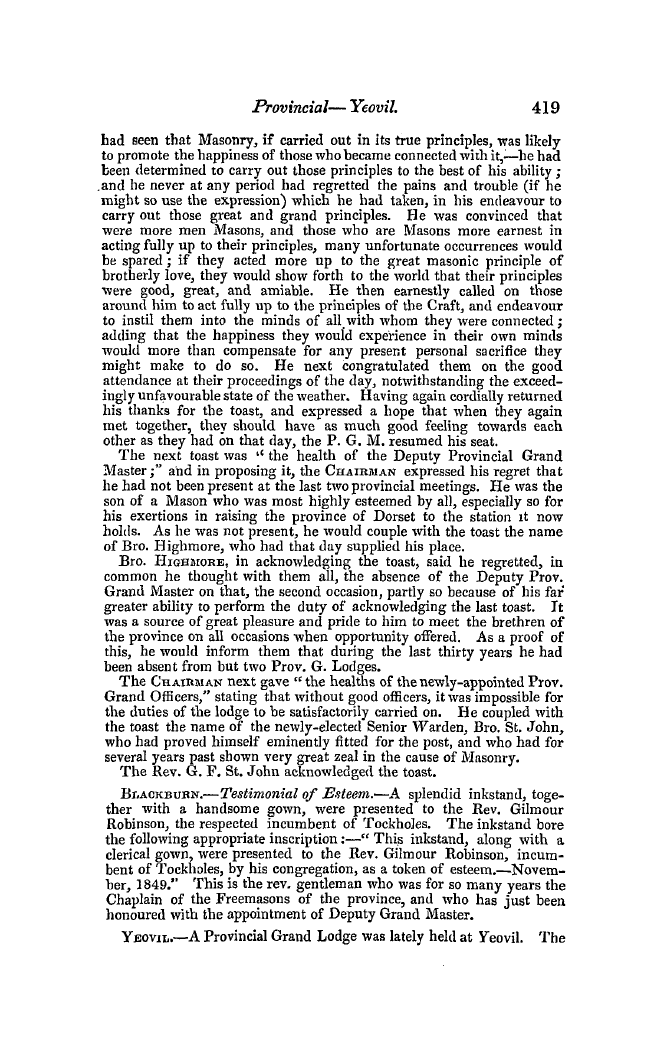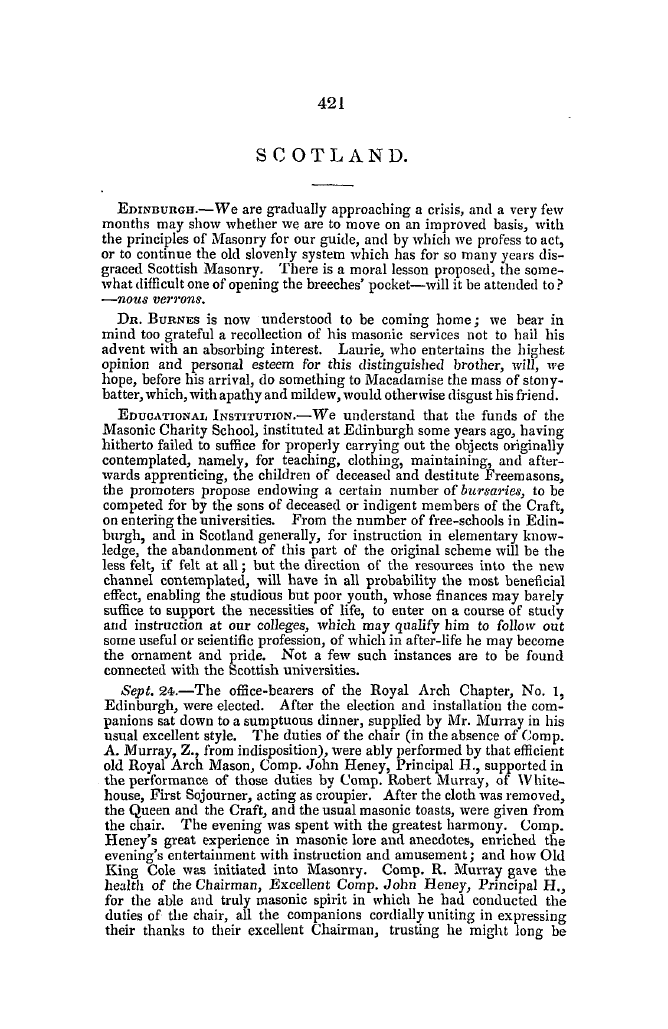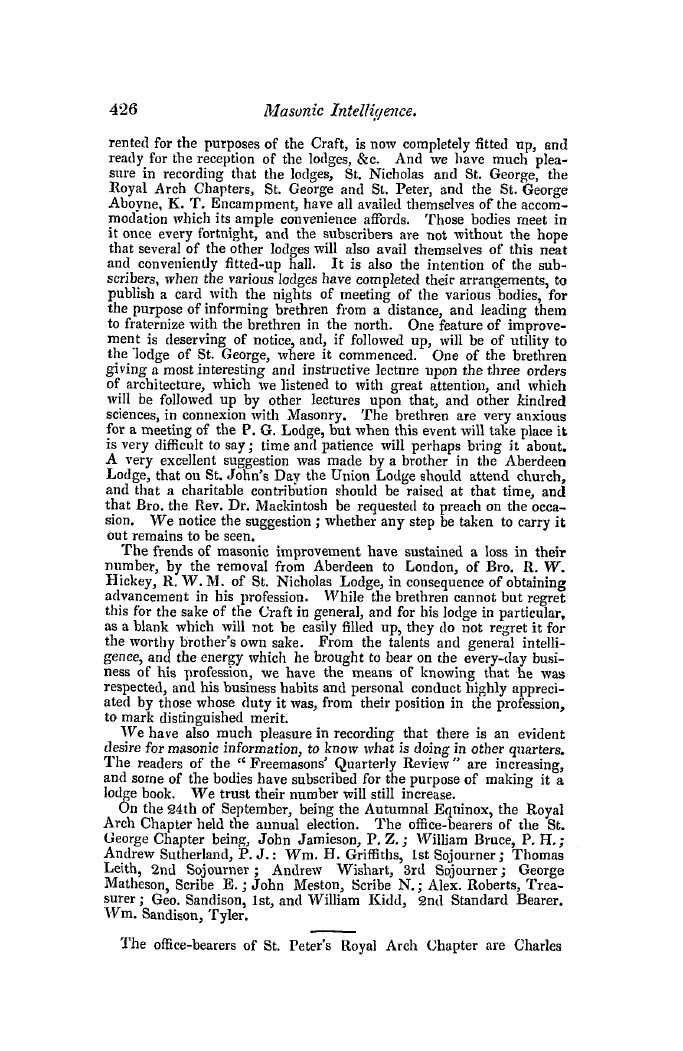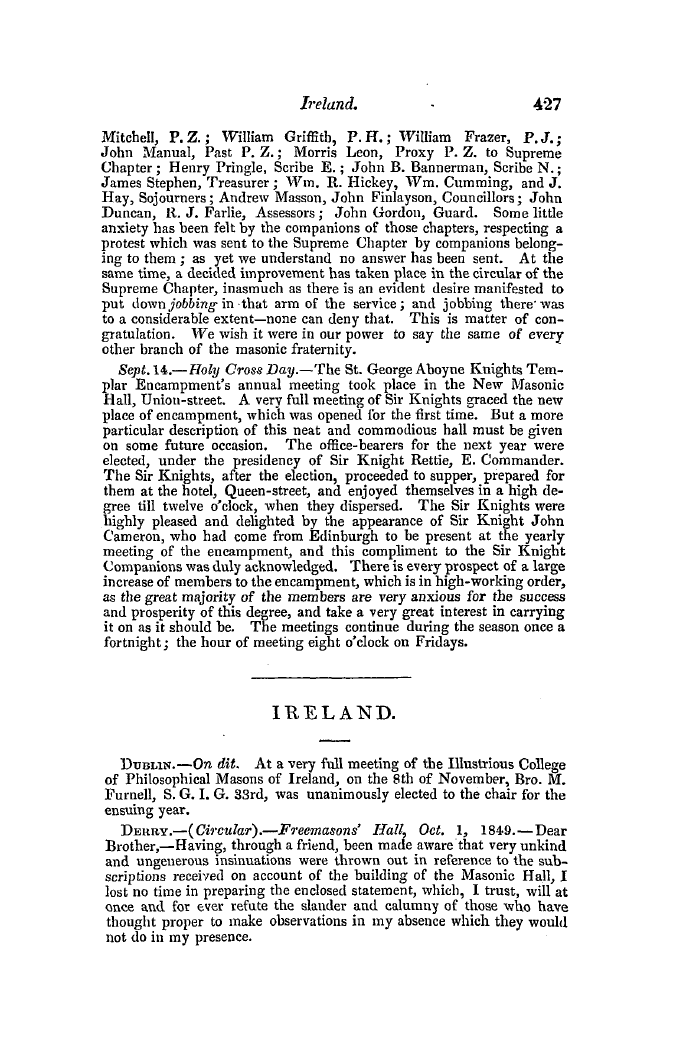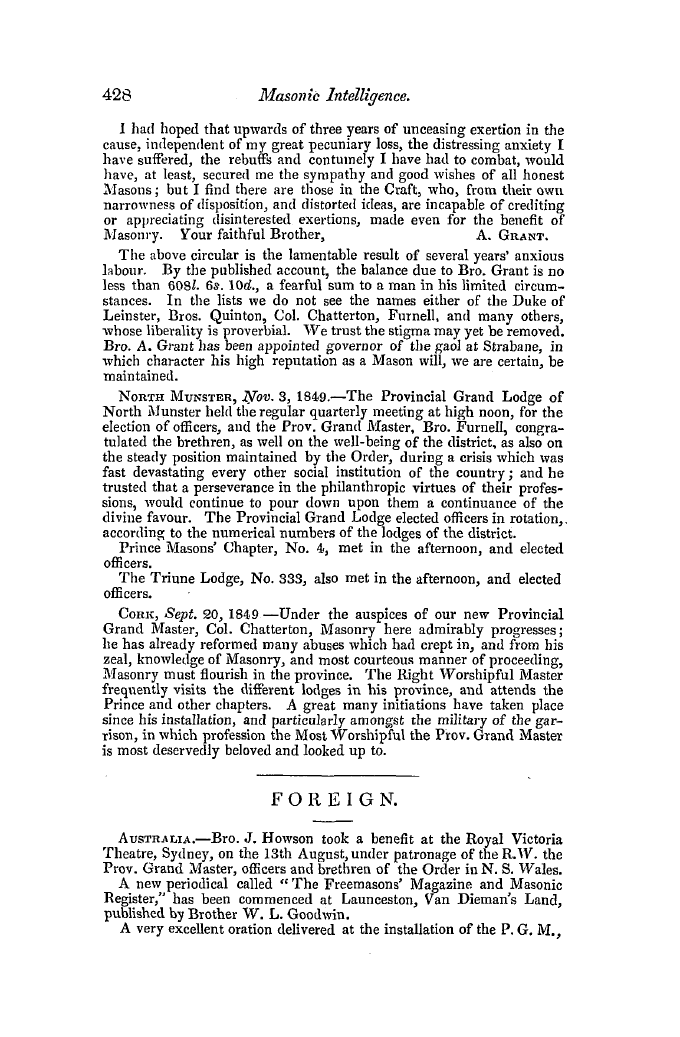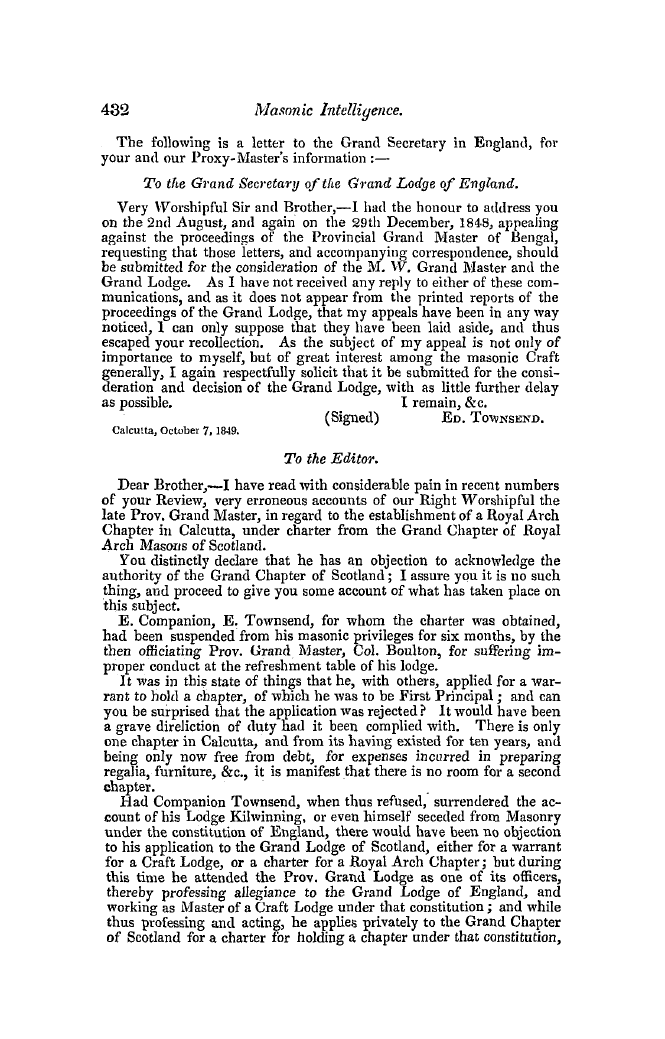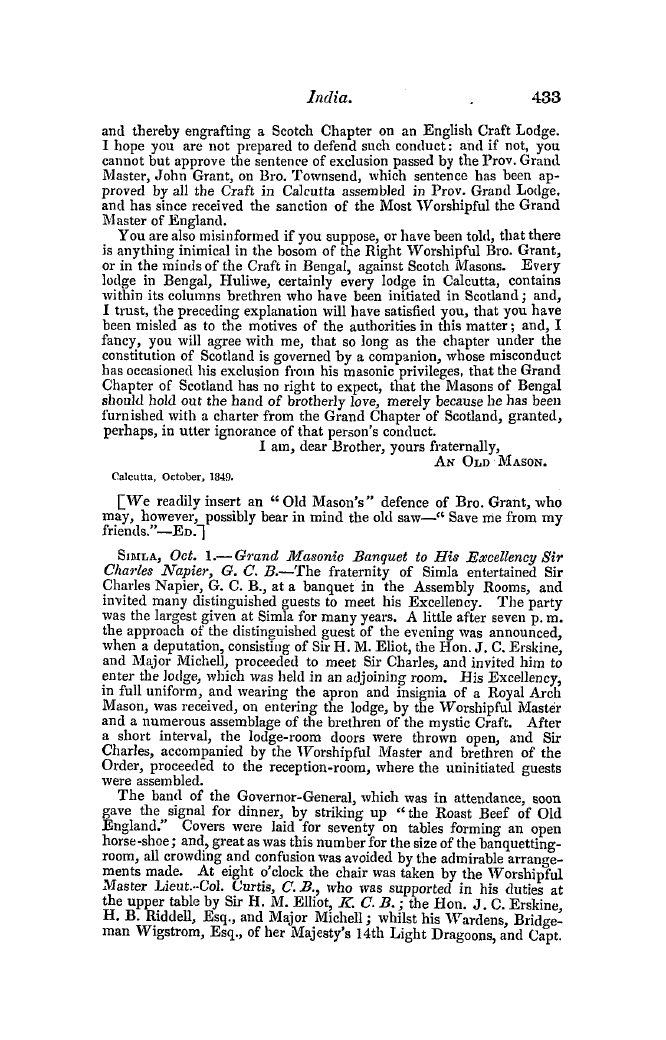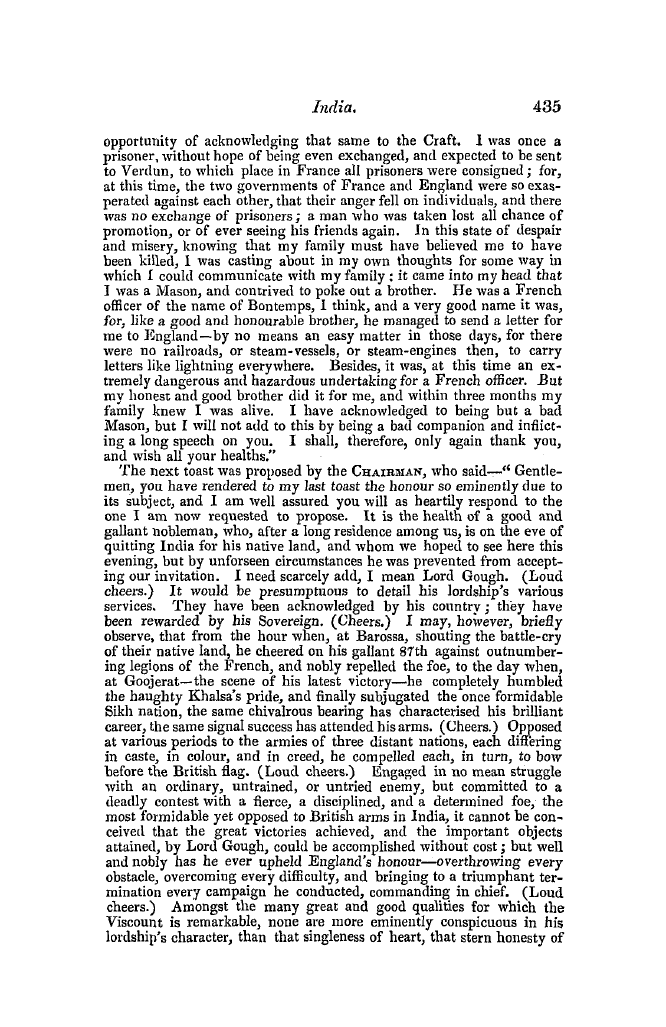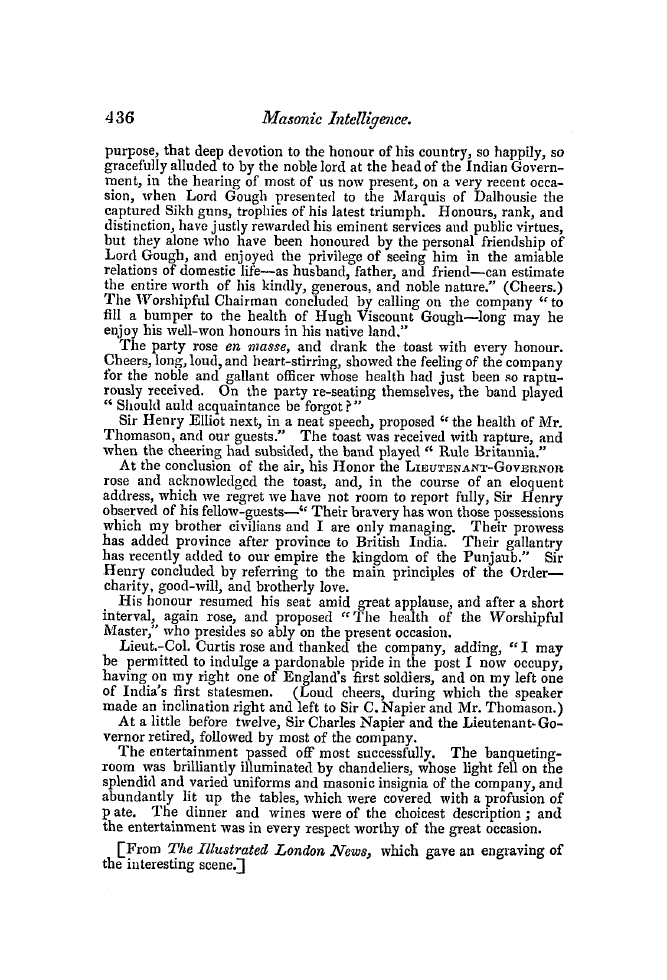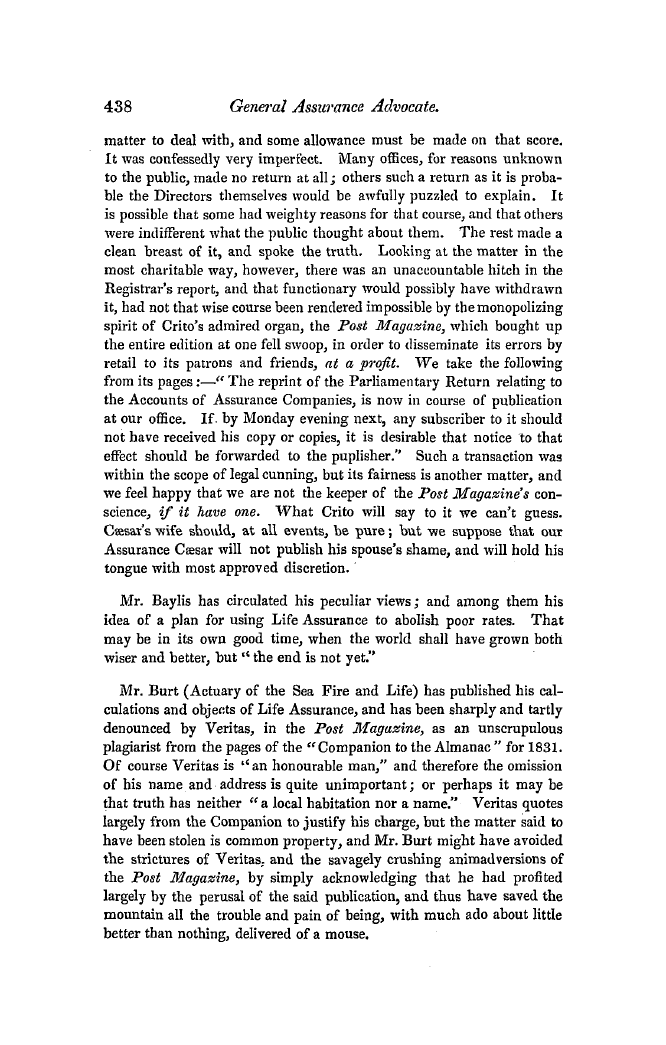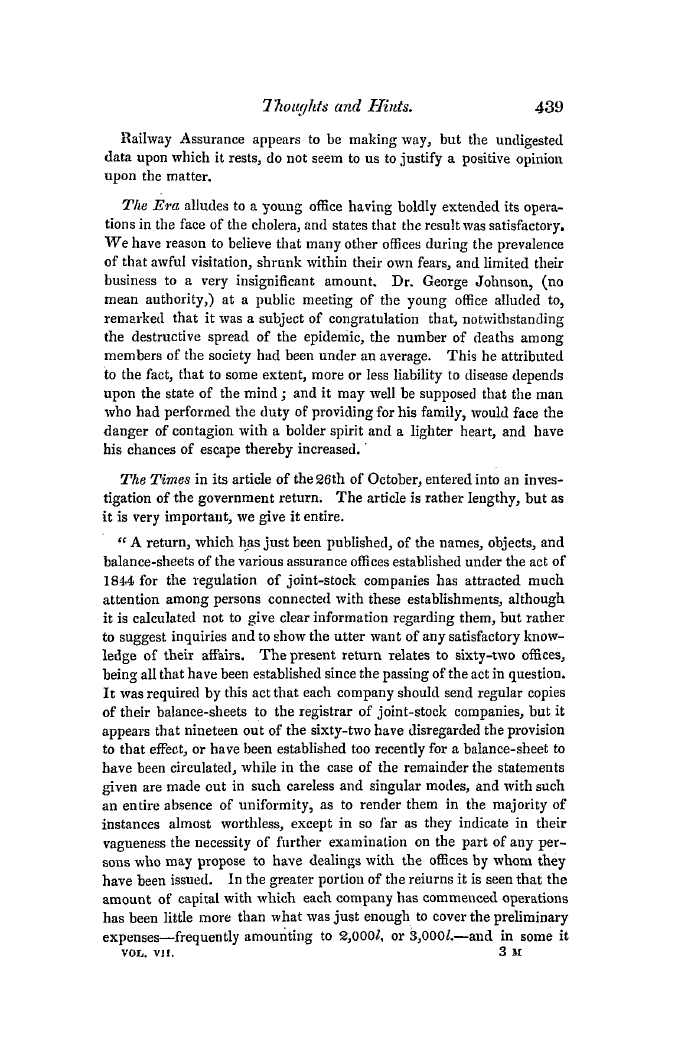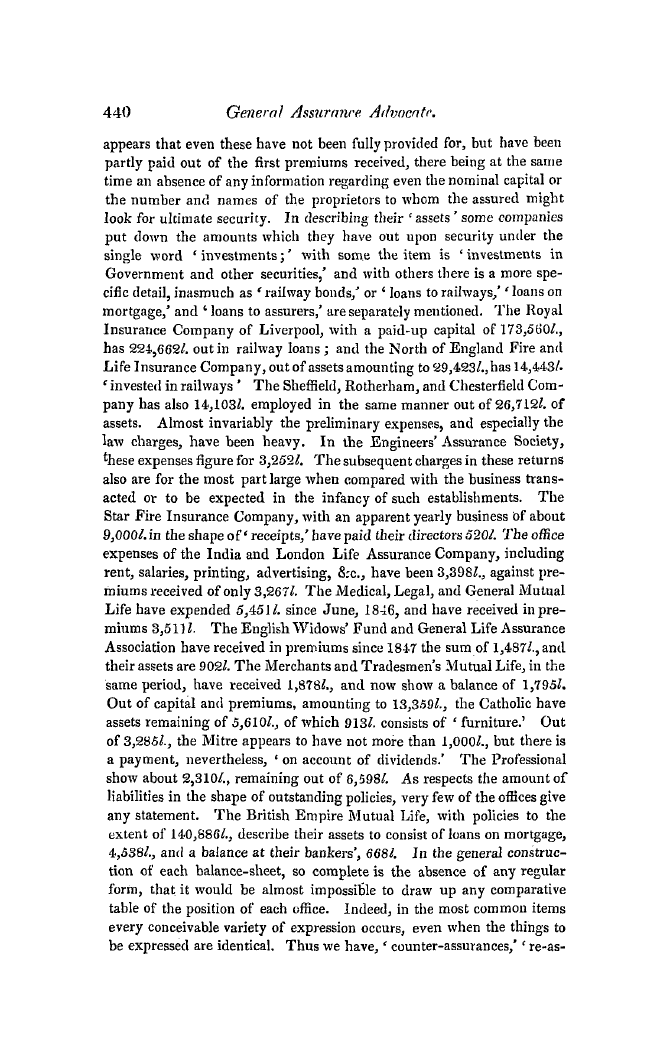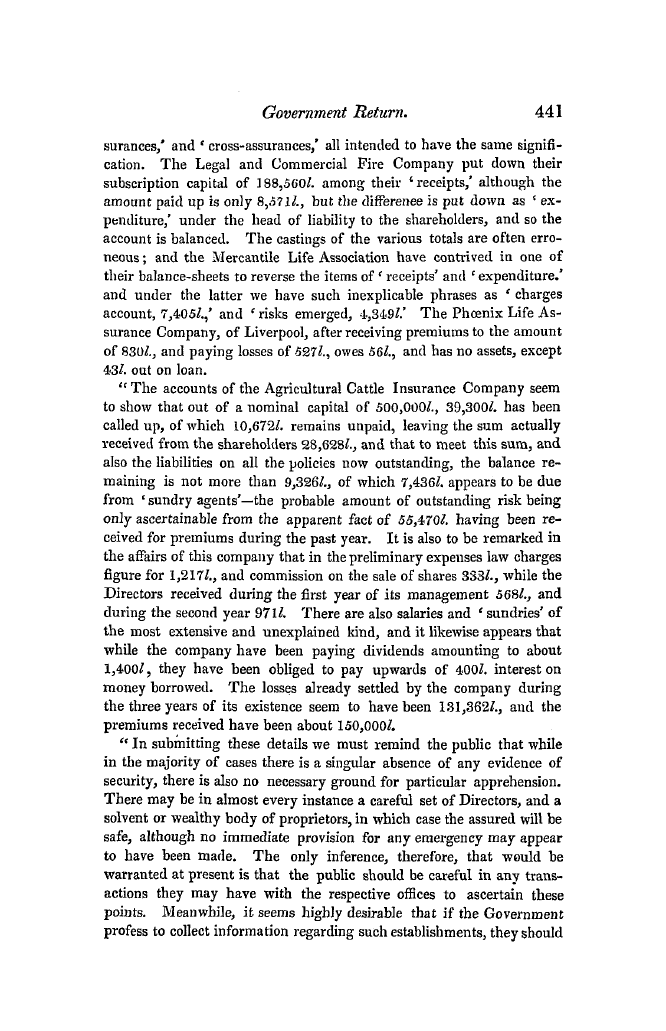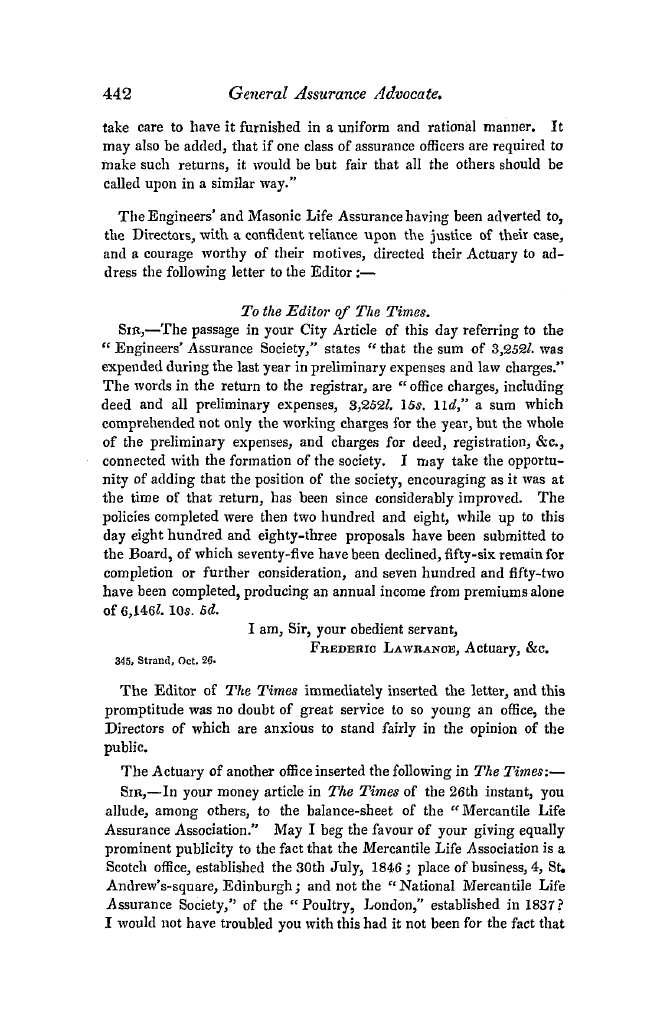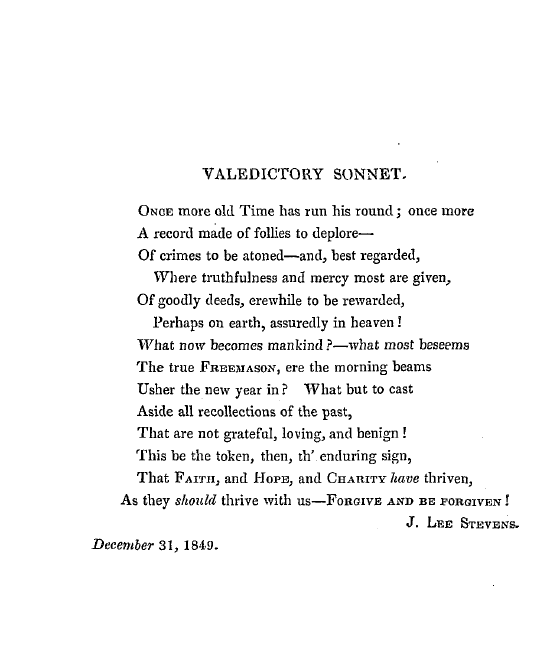Note: This text has been automatically extracted via Optical Character Recognition (OCR) software.
The First Point In The Pythagorean Triangle Explained.
prebends the remaining relatives . Next to this is that which contains the common people , then that which comprehends those of the same tribe , afterwards that which contains the citizens ; and then two other circles follow , one being the circle of those that dwell in the vicinity of the city , and the other of those of the same province . But the outermost and greatest circle , and which comprehends all the other circles , is that of the whole human race . " This admirable passage , says Taylor , is so conformable to the following beautiful lines in Pope ' s Essay on Man , that it is most probably the source from whence they were derived : —
" Self-love but serves the virtuous mind to wake , As the small pebble stirs the peaceful lake ; The centre moved , a circle straight succeeds . Another still , and still another spreads ; Friend , parent , neighbour , first it will embrace , His country next , and next all human race ; Wide and more wide the o'erflowings of the mind , Take every creature in of every kind . "
The learned Aben Ezra , on the 11 th chapter of Daniel , says that—¦ " The number one is in a manner the cause of all numbers , and is besides a complete number ; it causes multiplication and remainder , but does not admit of either itself . " A nd in another place he says— " Numbers are founded on the unit one . " The sage Latif observes the same . According to Euclid , in his second definition of the seventh book , numbers are formed of many units ; but unity being indivisible , has no
composition , nor is it a number , but the fountain and mother of all numbers . Being the cause of all numbers , they are formed by a plurality of units . Thus two is twice one , three is three units , & c . ; so that all numbers require the monad , while it exists by itself without requiring any other . All which is to be considered of the First Cause ; for as one is no number , but the cause and beginning of number , so the First Cause has no affinity to creatures , but is the cause and beginning of them ; they all stand in
need of Him , and He requires assistance from none . He is all in all , and all are included in Him in the most simple unity . The Jewish rabbins agree that He is one , and there is no unity like his in the universe ; the nearest idea that we can form of Him is symbolized by the unit or figure one . * The Pythagoreans say— " The monad is the principle of all things . From the monad came the indeterminate duadas matter subjected to
, the cause , monad ; from the monad and indeterminate duad , numbers ; from numbers , points ; points , lines ; from lines , superfices ; from superfices , solids ; from these solid bodies , whose elements are four , fire , water , air , earth ; of all which , trausmutated , and totally changed , the world consists . t
But Freemasonry has a peculiar reference for the monad , which produces some very striking and remarkable coincidences in every nation under the sun . In an old ritual of the Fellowcraft ' s degree , used about the middle of the last century , we find the following passage in reference equally to the first step of the winding staircase , the point , and the lelter G . — " God , the Great Architect of the Universe , whom it is at all times our duty to worship and obey . " In a ritual still more ancient , the same meaning is rather differently expressed , viz . — " The Grand Architect
and Contriver of the Universe , or he that was taken up to the topmost pinnacle of the holy temple . " This acknowledgment of the divine unity , or point within a circle , or ^\ , was common to all the systems of spurious Freemasonry that ever
Note: This text has been automatically extracted via Optical Character Recognition (OCR) software.
The First Point In The Pythagorean Triangle Explained.
prebends the remaining relatives . Next to this is that which contains the common people , then that which comprehends those of the same tribe , afterwards that which contains the citizens ; and then two other circles follow , one being the circle of those that dwell in the vicinity of the city , and the other of those of the same province . But the outermost and greatest circle , and which comprehends all the other circles , is that of the whole human race . " This admirable passage , says Taylor , is so conformable to the following beautiful lines in Pope ' s Essay on Man , that it is most probably the source from whence they were derived : —
" Self-love but serves the virtuous mind to wake , As the small pebble stirs the peaceful lake ; The centre moved , a circle straight succeeds . Another still , and still another spreads ; Friend , parent , neighbour , first it will embrace , His country next , and next all human race ; Wide and more wide the o'erflowings of the mind , Take every creature in of every kind . "
The learned Aben Ezra , on the 11 th chapter of Daniel , says that—¦ " The number one is in a manner the cause of all numbers , and is besides a complete number ; it causes multiplication and remainder , but does not admit of either itself . " A nd in another place he says— " Numbers are founded on the unit one . " The sage Latif observes the same . According to Euclid , in his second definition of the seventh book , numbers are formed of many units ; but unity being indivisible , has no
composition , nor is it a number , but the fountain and mother of all numbers . Being the cause of all numbers , they are formed by a plurality of units . Thus two is twice one , three is three units , & c . ; so that all numbers require the monad , while it exists by itself without requiring any other . All which is to be considered of the First Cause ; for as one is no number , but the cause and beginning of number , so the First Cause has no affinity to creatures , but is the cause and beginning of them ; they all stand in
need of Him , and He requires assistance from none . He is all in all , and all are included in Him in the most simple unity . The Jewish rabbins agree that He is one , and there is no unity like his in the universe ; the nearest idea that we can form of Him is symbolized by the unit or figure one . * The Pythagoreans say— " The monad is the principle of all things . From the monad came the indeterminate duadas matter subjected to
, the cause , monad ; from the monad and indeterminate duad , numbers ; from numbers , points ; points , lines ; from lines , superfices ; from superfices , solids ; from these solid bodies , whose elements are four , fire , water , air , earth ; of all which , trausmutated , and totally changed , the world consists . t
But Freemasonry has a peculiar reference for the monad , which produces some very striking and remarkable coincidences in every nation under the sun . In an old ritual of the Fellowcraft ' s degree , used about the middle of the last century , we find the following passage in reference equally to the first step of the winding staircase , the point , and the lelter G . — " God , the Great Architect of the Universe , whom it is at all times our duty to worship and obey . " In a ritual still more ancient , the same meaning is rather differently expressed , viz . — " The Grand Architect
and Contriver of the Universe , or he that was taken up to the topmost pinnacle of the holy temple . " This acknowledgment of the divine unity , or point within a circle , or ^\ , was common to all the systems of spurious Freemasonry that ever































































